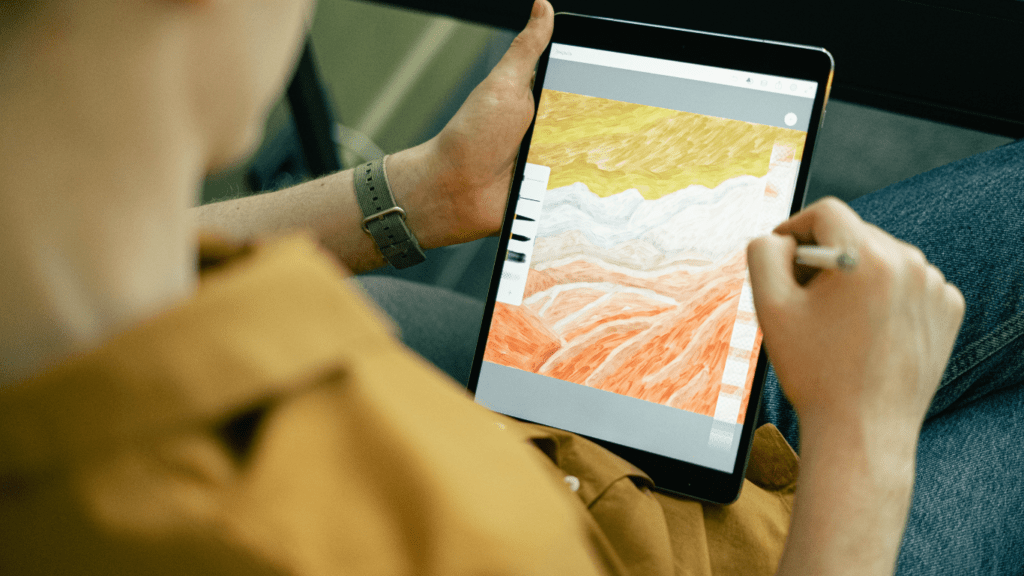Understanding NFTs
NFTs, or non-fungible tokens, are unique digital assets stored on a blockchain. Unlike cryptocurrencies such as Bitcoin or Ethereum, which are fungible and can be exchanged on a one-to-one basis, NFTs are indivisible and irreplaceable. Each NFT contains distinct information that distinguishes it from any other token, providing proof of ownership and authenticity.
Key Features of NFTs
- Uniqueness: Each NFT has unique metadata, making it different from every other NFT. This uniqueness is crucial for collectors who value exclusivity.
- Indivisibility: NFTs cannot be divided into smaller units like cryptocurrencies. They exist as whole items.
- Ownership: Blockchain technology ensures transparent and secure ownership records. Once an NFT is minted, it has an immutable record.
- Interoperability: NFTs can be used across different platforms and applications. Examples include gaming assets and digital art marketplaces.
Examples of NFTs
- Digital Art: Artists create digital works and sell them as NFTs. Famous digital artist Beeple sold an NFT for $69.3 million at a Christie’s auction in March 2021.
- Collectibles: Users buy and trade digital items like trading cards and virtual pets. CryptoKitties, a popular NFT game, allows users to breed, collect, and sell virtual cats.
- Virtual Real Estate: Platforms like Decentraland let users purchase, develop, and sell virtual land parcels.
- Royalties: Creators can earn royalties on secondary sales. Whenever an NFT is resold, the original creator gets a percentage of the sale.
- Authenticity: Blockchain technology ensures that NFTs are genuine and not easily duplicated.
- Liquidity: NFTs enable a new form of liquidity for digital assets. Digital artists and creators can monetize their works more easily.
Understanding NFTs provides a solid foundation for anyone interested in creating and selling their own tokens.
Tools and Platforms
To create and sell NFTs, using the right tools and platforms is essential. Here’s a guide to the recommended software and popular marketplaces for NFT creation and trading.
Recommended Software
Several software options simplify NFT creation. I suggest starting with these user-friendly tools:
- OpenSea: A versatile platform offering tools for artists to mint their NFTs without needing extensive technical knowledge.
- Rarible: A decentralized platform allowing users to create and sell NFTs. It supports multiple formats like GIFs, MP4s, and more.
- Mintable: Provides a straightforward interface for minting NFTs. It includes an “easy mint” feature for quick creation.
- Ethereum Wallets: Essential for storing NFTs. Popular choices include MetaMask, Trust Wallet, and Coinbase Wallet, which integrate seamlessly with various NFT platforms.
Popular Marketplaces
Selling NFTs requires access to well-known marketplaces. Consider these popular platforms:
- OpenSea: As one of the biggest NFT marketplaces, it supports a wide array of digital assets. It offers robust tools for both buyers and sellers.
- Rarible: Known for its user governance, allowing users to vote on platform decisions. It’s ideal for community-driven projects.
- SuperRare: Focuses on high-quality art pieces. It’s a curated marketplace, ensuring that only top-notch artworks get featured.
- Foundation: An invite-only platform that emphasizes supporting artists through community-led initiatives and auctions.
- Nifty Gateway: Known for hosting high-profile drops and collaborating with celebrities. It simplifies the purchasing process by allowing credit card payments.
Using these tools and platforms effectively enhances your NFT creation and sales process, enabling smooth minting and successful trading.
Creating Your NFT
Creating an NFT involves selecting your digital art, minting the token on a blockchain, and setting up a digital wallet to manage your assets. Each step is essential and requires careful consideration.
Choosing Your Art

Selecting digital art is the first step in creating an NFT. Art can range from digital paintings and music to virtual properties and GIFs. Ensure the digital piece is something you own or have rights to. Verify the file format and quality, as NFT platforms often have specific requirements and recommendations. Popular formats include JPEG, PNG, GIF, MP4, and MP3. High-resolution and unique content generally have higher value.
Minting Process
Minting transforms your digital art into an NFT on a blockchain. Begin by selecting a platform like OpenSea, Rarible, or Mintable. These platforms offer user-friendly interfaces and step-by-step guidance.
After registration, upload your digital file and fill in the details such as title, description, and properties. These attributes enhance the discoverability and uniqueness of your NFT. Pay the required gas fee, which varies depending on the blockchain and its current congestion, to complete the process. Once minted, your NFT is ready for sale.
Setting Up a Digital Wallet
A digital wallet is necessary to hold and manage NFTs and cryptocurrency. Choose a wallet compatible with your selected NFT platform, like MetaMask, Trust Wallet, or Coinbase Wallet. Install the wallet extension or app, then create an account. Secure your wallet with a strong password and backup, noting the recovery phrase. This will protect your assets if you forget your login credentials or lose access. Connect your wallet to the NFT platform to start minting, buying, and selling NFTs seamlessly.
Listing and Marketing Your NFTs
After minting your NFT and setting up your wallet, it’s time to make your digital assets stand out. Effective listing and marketing strategies are essential for attracting buyers and achieving success.
Writing a Compelling Description
A compelling description highlights the unique aspects of your NFT and engages potential buyers. Describe the inspiration behind the piece, its creative process, and any unique features it includes.
Detail what makes your NFT special compared to others. Include keywords relevant to your NFT to improve visibility in searches. For example, if your NFT is a digital painting of a futuristic city, mention terms like “cyberpunk art” or “digital futurism.”
Pricing Strategies
Price your NFTs strategically to attract buyers and maximize profits. Start by researching similar NFTs to understand the market standards. Consider the rarity, complexity, and creator reputation when setting a price.
For beginners, competitive pricing can entice initial buyers. As your reputation grows, you can gradually increase prices. Ensure the price reflects the value and effort invested in creating the NFT.
Promoting on Social Media
Social media platforms provide vast opportunities to reach potential buyers. Share your NFTs on platforms like Twitter, Instagram, and TikTok to build awareness. Use relevant hashtags to increase visibility and join NFT communities to engage with like-minded individuals. Collaborate with influencers in the NFT space to amplify your reach. Consistent posting and interaction with followers keep your audience engaged and interested in your offerings.
Managing Sales and Transactions
Efficient management of sales and transactions is crucial to ensure a smooth experience for both sellers and buyers of NFTs. Detailed attention to payments and buyer inquiries enhances credibility and fosters trust.
Handling Payments
Setting up your digital wallet correctly is essential for receiving payments. When you mint an NFT, you link your wallet to the platform (e.g., MetaMask on OpenSea). Ensure your wallet details are accurate to avoid transaction errors. Most NFT platforms accept only specific cryptocurrencies—commonly Ethereum (ETH)—so keep your wallet funded with the correct currency.
Here’s a quick look at popular wallet options and accepted cryptocurrencies:
| Platform | Wallet | Accepted Cryptocurrency |
|---|---|---|
| OpenSea | MetaMask | Ethereum (ETH) |
| Rarible | Trust Wallet | Ethereum (ETH) |
| Binance | Binance Wallet | Binance Coin (BNB) |
Make sure transaction fees are considered. Fees can vary based on network congestion. Platforms often display these fees prior to transaction confirmation, so allocate enough funds to cover them.
Addressing Buyer Inquiries
Effective communication is key when handling buyer inquiries. Promptly respond to questions about the NFT’s details, transaction processes, or any other concerns. Many platforms have built-in messaging systems; enable notifications to avoid missing essential queries.
Provide a FAQ section in your listing to address common questions. For example:
- Blockchain Used: Specify if it’s Ethereum or another blockchain.
- Ownership Rights: Clarify any commercial uses allowed.
- Transfer Process: Explain how the ownership transfer works post-purchase.
Being transparent and accessible builds credibility and encourages potential buyers to proceed confidently with their transactions.



 Founder & CEO
Daniel Anderson is the visionary founder and CEO of the website, leading the charge in revolutionizing the crypto space. With a deep understanding of blockchain technology and years of experience in the industry, Daniel has established himself as a key figure in the cryptocurrency world. His passion for decentralization and financial innovation drives the platform’s mission to deliver cutting-edge insights and resources for crypto enthusiasts, traders, and investors. Under his leadership, the website has grown into a trusted hub for the latest trends, news, and developments in the digital asset space.
Founder & CEO
Daniel Anderson is the visionary founder and CEO of the website, leading the charge in revolutionizing the crypto space. With a deep understanding of blockchain technology and years of experience in the industry, Daniel has established himself as a key figure in the cryptocurrency world. His passion for decentralization and financial innovation drives the platform’s mission to deliver cutting-edge insights and resources for crypto enthusiasts, traders, and investors. Under his leadership, the website has grown into a trusted hub for the latest trends, news, and developments in the digital asset space.
